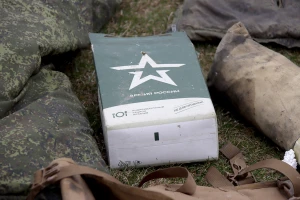
NASA launches Antares rocket with Ukrainian components to International Space Station
On November 7, NASA sent the Antares rocket with Ukrainian components, which delivers cells from the ovaries of cows and other experiments to the International Space Station (ISS)
This is reported on the Space website.
A Northrop Grumman cargo ship carrying cow ovarian cells along with a series of other science experiments went into orbit on Monday.
The Northrop Grumman Cygnus spacecraft launched to the International Space Station on the company's Antares rocket at 5:32 a.m. ET from the Mid-Atlantic Regional Spaceport at NASA Wallops Air Force Base on Wallops Island, Virginia.
“Monday's launch, however, appeared flawless, with the Antares rocket lighting up the predawn sky as it launched into orbit. About 8 minutes later, the Cygnus NG-18 spacecraft, named the SS Sally Ride in honor of astronaut Sally Ride, the first American woman in space who died in 2012, reached orbit and was expected to unfurl its twin solar arrays. If all goes well, the Cygnus spacecraft should arrive at the space station early Wednesday (Nov. 9), where it will be captured by astronauts using a robotic arm at 5:05 a.m. EST and attached to an open berth,” the message says.
After the Russian invasion of Ukraine, the launch was the first flight of the Antares rocket, which uses a Ukrainian first stage and Russian rocket engines.
“This is a very exciting time for research on the International Space Station. Every new vehicle that launches is bringing up not only new research but also new capabilities,” Heidi Parris, NASA's associate program scientist for the station program, said
Also, the Cygnus NG-18 cargo ship carries 3,749 kilograms of cargo for the space station crew. This includes 1,637 kg of supplies, 850 kg of scientific equipment, 66 kg of spaceflight equipment, 1,077 kg of transport equipment, and 78 kg of computers.
In addition, the BioFabrication Facility 3D printer, which will print a meniscus and a set of human heart cells, headed to the orbiting laboratory.
- News














































